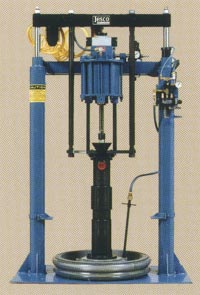

Place your bag of trash into the burn barrel. This is where a lot of folks screw up, the results of which lead to smoky, stinky operation of burn barrels that irritate neighbors and are just plain nasty. When your burn bag is full, take it out to the burn barrel! How do I use a burn barrel? Other items can be thrown into the trashcan as usual. That's close to 30% of waste that should be composted. (EVERYONE should have one!) The EPA estimates that roughly 14% of municipal solid waste is food scraps, and 13% is yard trimmings. Separate out your food scraps and feed them to your animals or throw them in your composting bin. #5 containers (such as yogurt cups, sour cream containers, lip balm containers and others) have been difficult to recycle, but there is a new website that lists over 200 locations worldwide that now accept #5 plastic for recycling. Plastic grocery bags can now be dropped off at many retailers. Many common plastic containers such as laundry jugs, shampoo, dish soap, vinegar, etc are #1 and #2, which are recyclable in most areas.

Separate out any recyclables and use your local recycle centers.
Paper and cardboard not suited for recycling (waxy or coated with food waste). Non-recyclable plastic (I'm talking the occasional small container, not large volume waste.). This is strictly for small amounts of easily burnable trash. Don't burn furniture or any large items, such as bags from silage. Contact your local municipality for proper disposal options. Household hazardous waste, such as paint and chemicals. Other non-combustible items, like light bulbs. Food scraps ( compost or feed to chickens). The efficiency of how well your barrel will operate begins in your kitchen. It will also keep the barrel from rusting as quickly. A cover will stop the contents inside the barrel from getting wet and make for an easier burn, if you have trash waiting to burn. When not in use, the barrel should be covered by the sheet metal rain cover. This limits the risk of combustible material escaping the barrel. A burn cover is a metal grate, fencing or hardware cloth that will trap burning materials in the barrel. When the barrel is in use, the opening should be covered by a burn cover. This is done to permit airflow and help with drainage. Make sure the edges of the barrel are on the blocks but there is an airspace directly under the barrel. Once the holes are in place, set the barrel, open end up, onto some concrete blocks. Cut a piece of steel siding or roofing as a “rain cover” – put hooks or a tie on it if you have strong windsĭon’t drill too many or your barrel will rust out faster or fail in the event of an aerosol can exploding inside the drum. Create a fire cover – using an old grill top or fencing and bend it so it fits on loosely.  Drill approximately 20 holes in the sides of the drum, at varying heights. Drill four 1/2 inch holes in the BOTTOM of the drum to allow any rainwater to run out. Some people use a drill, others use a handgun. How you put holes in the drum is up to you. Place air holes in your metal drum for air to enter during the burning process. Some locals will dig up the sod under their barrels and fill in with sand…nice, but not necessary.
Drill approximately 20 holes in the sides of the drum, at varying heights. Drill four 1/2 inch holes in the BOTTOM of the drum to allow any rainwater to run out. Some people use a drill, others use a handgun. How you put holes in the drum is up to you. Place air holes in your metal drum for air to enter during the burning process. Some locals will dig up the sod under their barrels and fill in with sand…nice, but not necessary. HOW MANY CANS OF SPRAY FOAM WILL FILL A 55 GALLON DRUM FREE
piece of sheet metal to cover barrel openingĬhoose a location for your barrel that is down the prevailing wind of your home and free of trees and other combustible materials. metal grate or heavy fencing section to cover barrel opening. 55 gallon, open head (open on one end) steel drum (not plastic). (See bottom of post.) How do I make a burn barrel? Materials needed for a burn barrel: You can also buy burn barrels ready made. If you don’t have one and are thinking of making one, please check local ordinances. (Inside diameter 22.5 inches, inside height 33.5 inches.) Basically, it's a personal incinerator. What do I do with the ashes and unburned contents in the barrel?Ī standard burn barrel is a metal 55 gallon open head drum, modified to burn household trash safely and cleanly.







 0 kommentar(er)
0 kommentar(er)
